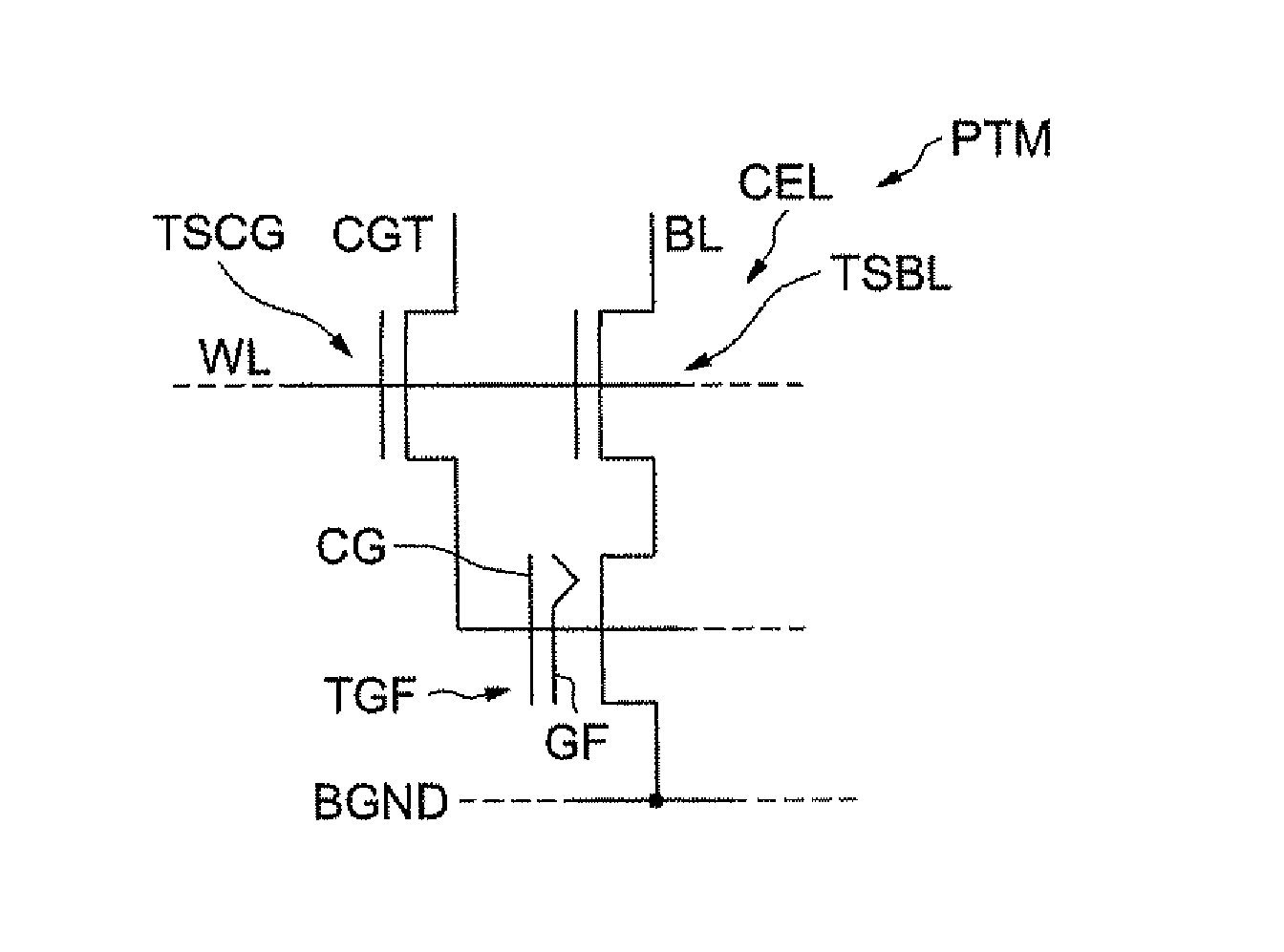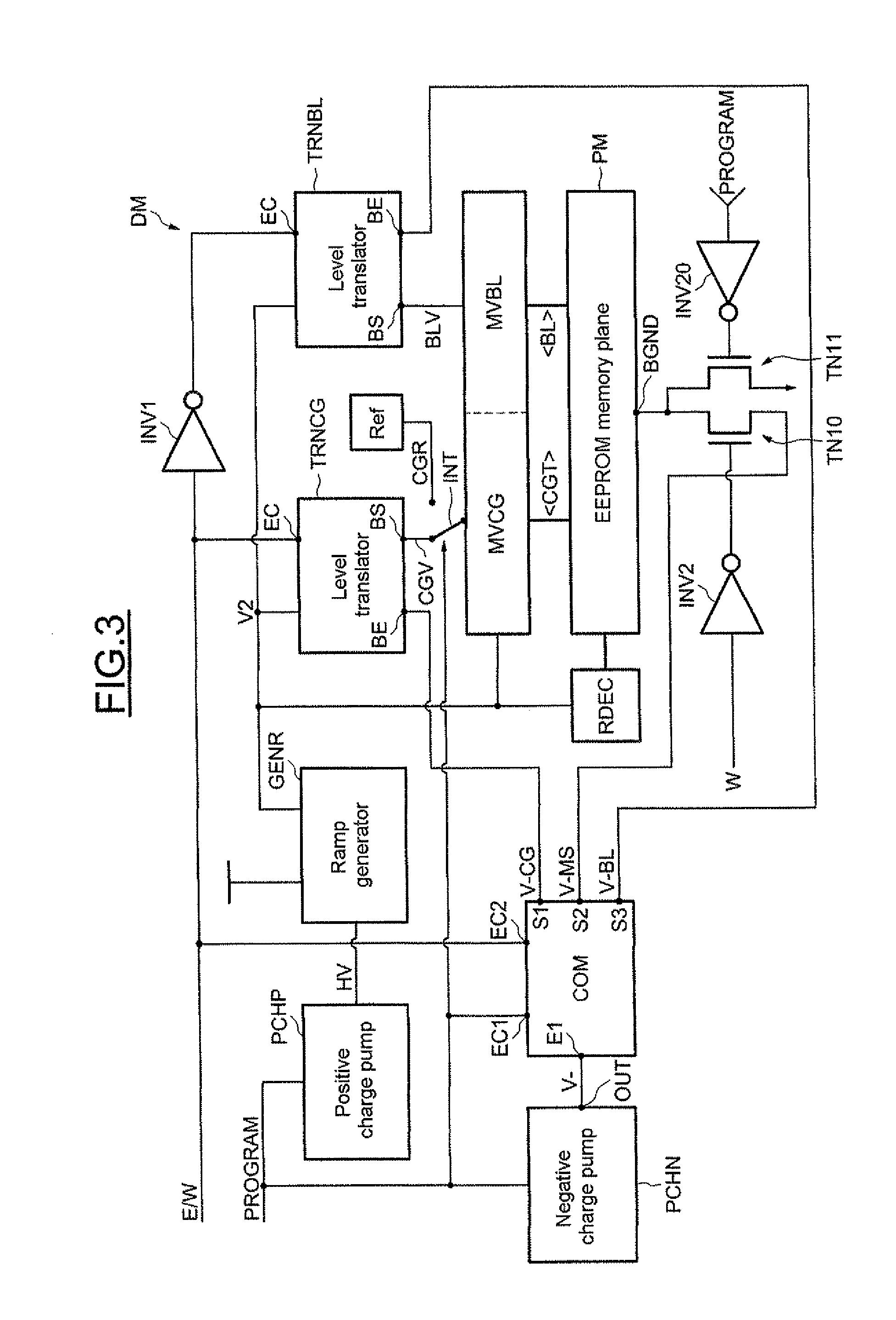Method of programming an electrically programmable and erasable non-volatile memory point, and corresponding memory device
a non-volatile memory, electrically erasable technology, applied in the field of memory, can solve the problems of reducing the chances affecting the production process of the memory plane, and affecting the effect of the control design, so as to reduce the chance of a short circuit
- Summary
- Abstract
- Description
- Claims
- Application Information
AI Technical Summary
Benefits of technology
Problems solved by technology
Method used
Image
Examples
Embodiment Construction
[0034]An example of the architecture of memory points is illustrated in FIG. 1. In this drawing, the memory point PTM has a memory cell CEL including a transistor TGF having a control gate CG and a floating gate GF. The cell CEL is connected to a bit line BL through a bit line selection transistor TSBL.
[0035]The cell also includes a control gate selection transistor TSCG connected between a gate control line CGT and the control gate CG of the floating-gate transistor TGF. The gates of the transistors TSCG and TSBL are connected to a word line WL extending in a conventional way perpendicularly to the bit line BL. The source of the transistor TGF is connected to a ground line BGND.
[0036]The architecture of FIG. 1 therefore provides one cell memory for each bit. This memory point can be programmed, that is, written to or erased, or read.
[0037]Generally, words of x bits, typically eight bits, forming bytes, are stored in an EEPROM. Typically, therefore, the storage area for a byte has e...
PUM
 Login to View More
Login to View More Abstract
Description
Claims
Application Information
 Login to View More
Login to View More - R&D
- Intellectual Property
- Life Sciences
- Materials
- Tech Scout
- Unparalleled Data Quality
- Higher Quality Content
- 60% Fewer Hallucinations
Browse by: Latest US Patents, China's latest patents, Technical Efficacy Thesaurus, Application Domain, Technology Topic, Popular Technical Reports.
© 2025 PatSnap. All rights reserved.Legal|Privacy policy|Modern Slavery Act Transparency Statement|Sitemap|About US| Contact US: help@patsnap.com



